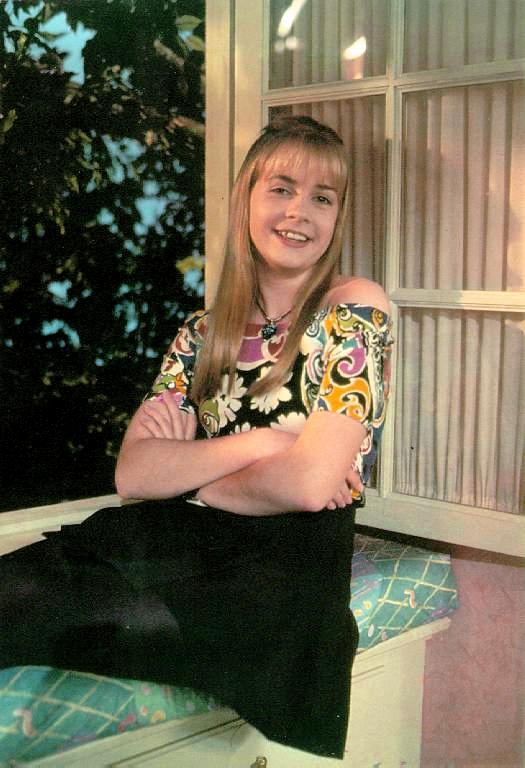Just For Me: An Exploration of Nickelodeon, TV’s First Network for Kids part III

By 1992, Nickelodeon was beginning to see competition from broadcast channels such as Fox, UPN, WB, as well as cable channels like the Family Channel, Cartoon Network, Discovery Channel, and the Learning Channel. While many of these networks struggled to maintain ratings, Nickelodeon viewer ship steadily rose, making it the number one network on cable and the highest rated children’s network by 1996. 
What made Nickelodeon so special? For one, the network had the advantage of brand association before any other kid’s network could develop. In his essay, “A Kid’s Gotta Do What a Kid’s Gotta Do”: Branding the Nickelodeon Experience, Kevin Sandler writes, “promoting specific prosocial elements such as diversity, nonviolent action, appropriate levels of humor, and guidelines for success – all without ever talking down to kids – characterizes the brand attitude of Nickelodeon” (45). In other words, Nickelodeon offers kids the chance to be kids, while still under the approval of adults – something broadcast networks could not provide. 
Nickelodeon accomplished the creation of this image in several ways, namely by gaining the attention of kids. When the show You Can’t Do That On Television introduced ‘slime’, a sloppy green goop used for making messes, in 1984, it became the networks trademark, appearing in commercial spots and other programs such as the hit 1986 game show Double Dare. As a visual message, ‘slime’ resonated with kids, showcasing the network at its goofiest; messy and out of control, yet in the spirit of good, wholesome fun. Other trademark visuals, such as the orange splat logo design, worked to reinforce the kids-first attitude of the network (Sandler 48-9). 
Likewise, Nickelodeon live action programs proved that the network had a sensitive, relevant side to it as well. Shows like Hey Dude, Welcome Freshman, Fifteen, and Are You Afraid of the Dark? dealt with teenage issues in mature ways. This was attractive not only to kids, but parents who were tired of the violence and stupidity that ran rampant throughout kids programming (Sandler 49). It also opened the floodgates for sensitive teen dramas, like Degrassi and those that air on WB.
Nick bolstered this kid friendly image by being one of the first networks to destroy gender and ethnic myths that plagued children’s programming. Before Nickelodeon, almost all children’s shows were divided by sex, with white males being the dominant focus group. Broadcast networks featured action adventure shows characterized by slapstick violence that catered to young male viewers, counterbalanced by cute, colorful programs for girls. Female characters were often stereotyped, or eliminated from children’s shows entirely. Most networks assumed that boys did not watch girl’s shows, and vice versa (Seiter & Mayer 122). 
However, Nickelodeon shattered this concept by casting female leads in shows like Clarissa Explains It All and The Secret World of Alex Mack while still maintaining a strong male audience. These shows worked because they focused on topics affecting all kids – parents, school, friendship – and were not gender specific. At the time, many TV executives saw this as a bi-product of the cable market: “the message was that it worked for cable, and for an all-kids’ network, but was unrealistic as a business strategy for network kids’ shows” (Seiter & Mayer 123). However, the success of these programs proved that entertainment was genderless, and laid the foundation for future cross-marketable programs, such as the WB’s Animaniacs and Disney Channel’s Lizzie McGuire. 
Nickelodeons approach to ethnic diversity was similar to its approach to gender. Most broadcast networks would throw an ethnic character into their programs simply to be politically correct, but shied away from programs featuring ethnic leads, but not Nickelodeon. From its pre-school morning programs to late night teen shows, Nickelodeon programs portrayed many diverse characters. Shows like The Brothers Garcia, a sitcom about a Latino family, The Mystery Files of Shelby Woo, a mystery show about an Asian spy, and My Brother & Me, another sitcom featuring an African American family, showed that programs involving race could be universal, and broadened Nick’s appeal as an “all kid” network. As a global network, Nick caters regional programming to fit the culture of the area, while allowing other distinct cultural voices the right to be heard. Like other Nickelodeon programming, these programming philosophies opened the market for other ethnically driven children’s shows, like Disney’s The Proud Family.
Part IV coming soon...
Check out Just for Me Part II!
Check out Just for Me Part I!

2 comments:
Your blog keeps getting better and better! Your older articles are not as good as newer ones you have a lot more creativity and originality now keep it up!
I truly believe that we have reached the point where technology has become one with our world, and I am fairly certain that we have passed the point of no return in our relationship with technology.
I don't mean this in a bad way, of course! Societal concerns aside... I just hope that as technology further innovates, the possibility of copying our brains onto a digital medium becomes a true reality. It's one of the things I really wish I could encounter in my lifetime.
(Posted on Nintendo DS running [url=http://quizilla.teennick.com/stories/16129580/does-the-r4-or-r4i-work-with-the-new-ds]r4i dsi[/url] DS scPost)
Post a Comment